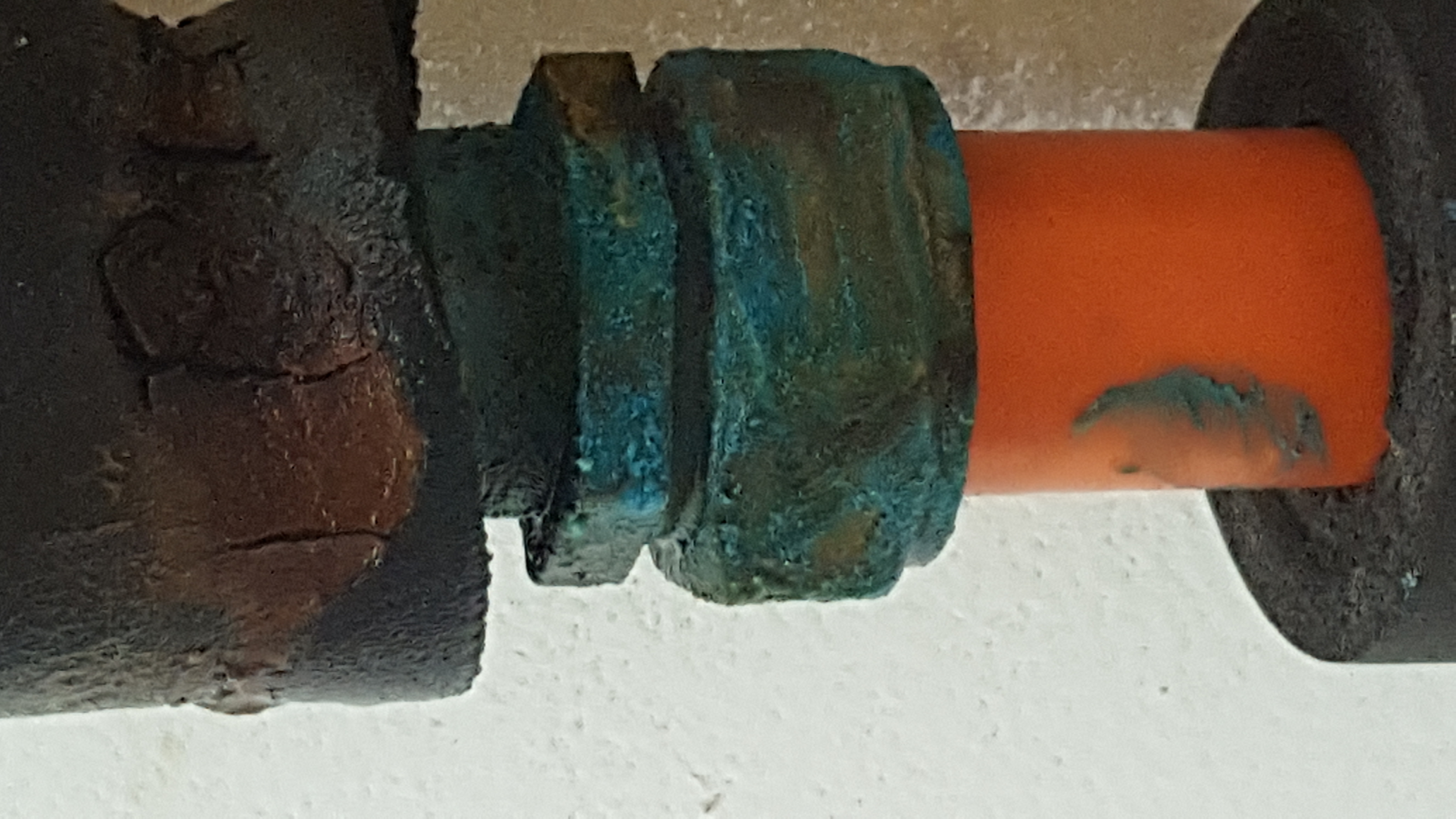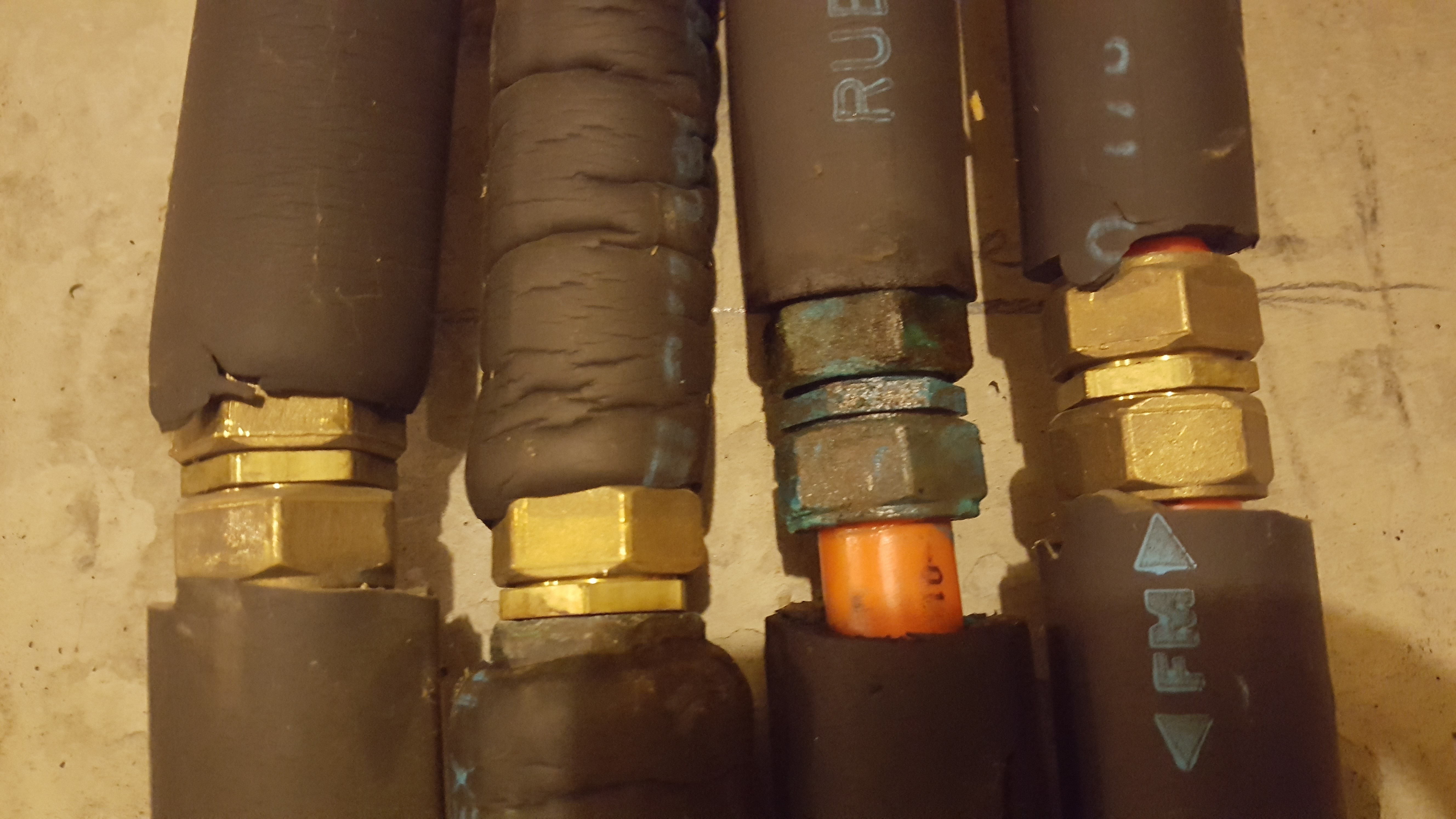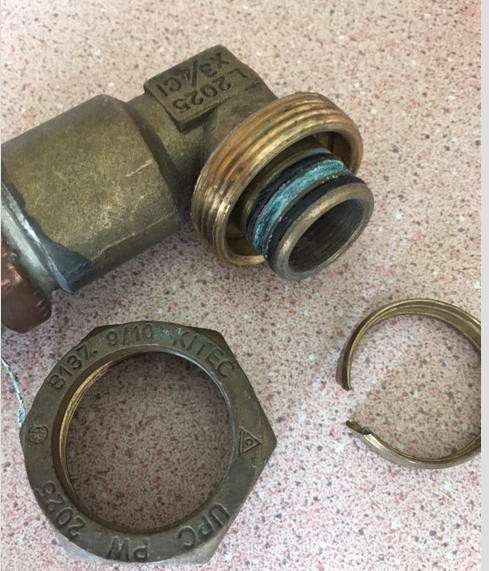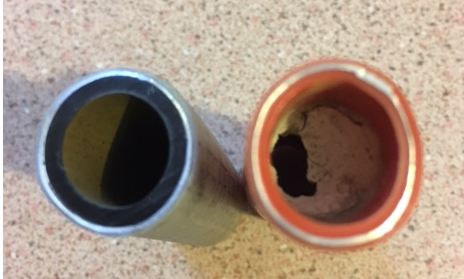Welcome! Here are the website rules, as well as some tips for using this forum.
Need to contact us? Visit https://heatinghelp.com/contact-us/.
Click here to Find a Contractor in your area.
If our community has helped you, please consider making a contribution to support this website. Thanks!
Hydronic Heating Pipe
Options
RFG
Member Posts: 2
in Oil Heating
My house was build in 2001/2002. We have two small twin boilers that heat antifreeze which is then circulated around to multiple fan coils. The piping is a flexible pipe called IPEX. Has anyone heard of this type of piping? I have several (not all) leaky union fittings and have had my heating oil/service company and plumbers take a look at the leaky unions. None of them seem overly excited to address my problem and they all told me they have never of IPEX. My trusted Plumber suggested I contact Heating Help to see if you know anything about this flexible piping system.
The oil/service company said I need to replace all the unions and suggested that the antifreeze became acidic and has corroded the unions to the point where they became leaky? Another contractor suggested the piping may not meet standards and should be replaced (a big job it true). I wonder if the unions just need to be tightened?
It is true that from 2001/2 until the approximately 2013 the Antifreeze was never changed. I did change it out at the advise of my oil heating/service company.
What I would like to understand: Is IPEX a know/trusted brand for hydronic / heating applications? Is this a standard pipe that accepts standard fittings that could be easily replaced? Is it possible that the antifreeze would become so acid it would destroy the compression type union fittings to the point they would need to be replaced?
R
The oil/service company said I need to replace all the unions and suggested that the antifreeze became acidic and has corroded the unions to the point where they became leaky? Another contractor suggested the piping may not meet standards and should be replaced (a big job it true). I wonder if the unions just need to be tightened?
It is true that from 2001/2 until the approximately 2013 the Antifreeze was never changed. I did change it out at the advise of my oil heating/service company.
What I would like to understand: Is IPEX a know/trusted brand for hydronic / heating applications? Is this a standard pipe that accepts standard fittings that could be easily replaced? Is it possible that the antifreeze would become so acid it would destroy the compression type union fittings to the point they would need to be replaced?
R
0
Comments
-
Do you have a picture of the fittings?"If you can't explain it simply, you don't understand it well enough"
Albert Einstein0 -
Is the pipe orange?0
-
If it is the orange Kitec version, there were some issues with the tube, and some fitting dezincification issues, I believe.
http://thechronicleherald.ca/homesnews/1155792-what-homeowners-should-know-about-kitecBob "hot rod" Rohr
trainer for Caleffi NA
Living the hydronic dream1 -
Thanks to all for the helpful comments on my situation with the leaky Orange IPEX pipe fittings. As you can see from the attached pictures, some fittings look great and others do not.
I would be interested if this was caused by me the homeowner not refreshing the anti-freeze HT fluid for ten year as my heating oil contractor would like me to believe. Or the cause is a bad case of fitting dezincification as Hot Rod has suggested. Frankly I think dezincification is more likely because some of the fitting appear to be in perfect condition.
After looking at the pictures can you comment on a course of action going forward.
A) Tighten Leaky Fittings Replace Fittings that are Leaky
Replace Fittings that are Leaky
C) Replace All Fitting
D) Replace All Pipe and Fittings
E) Move
Thanks to all who have contributed.




0 -
That is the glycol.... finds/ makes leaks if left uncleaned and untreated. The system prob either was not cleaned before the glycol went in, had poor/no inhibitor in it or the water qualtity it was added to was plain bad. Is therer a need for the glycol. Most all cases it is NOT needed unless there are frequent power outages or the house/ system it poorly constructed.
Are there active leaks/drips or just the residue? A repipe as this point is overkill.2 -
Here is what a Kitec fitting loos like, under the hood.
There are two o-rings that actually create the seal. If they are damages, dried out or compromised from aggressive fluid, that is a problem. As Kevin mentioned, glycol is a tough fluid to keep in.
I suppose you could go online and order some new rings, metric size probably.
You had to be very careful when you made up a Kitec fitting. they had a special reamer to knock the sharp edge off the end of the tube and bring it to round after cutting it with a dull scissor cutter
I used an umbrella reamer in a cordless drill when doing a lot of connections.
Really no way to seal that leak if the o-rings are damaged without replacing the rings.
Also the rings did tend to harden and go bad if they sat in the truck or shop for years. If you shop for new rings, best get new ones, not old inventory.
There could still be issues with the brass itself, that was usually more common on domestic water systems, the glycol inhibitors should protect the brass, although it may need to be flushed, cleaned and replaced, check the ph, should be above 9

Bob "hot rod" Rohr
trainer for Caleffi NA
Living the hydronic dream1 -
Agreed -- first step: Do you really need the glycol?
I would replace the affected fittings and (unless it is relatively new) replace the expansion tank, then flush well with fresh water. Next, fill with a good hydronic cleaner (e.g. Rhomar, Fernox) and run it up to temperature for a few hours, then drain, flush, and fill with a conditioner. Check carefully for leaks -- turn off the auto-fill and see how long it holds pressure. If it loses more than a couple of PSI in a week, something is dripping.0 -
Earlier, I was searching to collect more technical information over PEX al pex piping that I came across with this link about IPEX . Although this brand is not available in our area , it provides me with great information on that type of piping .i have heard more Ipex failures some other places ,and the above stated remedies are excellent to carry out .
http://www.plumbingdefect.com/0 -
I have seen other issues with the Kitec, one being that the tube develops blisters, like the fluid gets between the layers somehow. This is a different issue from the high zinc content fittings dezincifing.
There were a few way that PAP tube was manufactured in regards to the aluminum layer. On method was a butt weld, the other a lap. Of course both methods were promoted as superior.
Some conditions, maybe temperature extremes caused that seam to fail. Or maybe even during the extruding process?
When that happens you lose both the O2 barrier and structural integrity of the tube.
If you like the workability of AL tube, consider the Viega FostaPex. That is a full on pex tube inside, with an aluminum wrap around it, then another PE coating over the aluminum.
So if have the same tube integrity that you would with regular pex, with the added feature of the al and PE jacket.
It does take some special tools to strip the outer jacket to make the fitting crimp.
Here is FostaPex next to orange Kitec.
Bob "hot rod" Rohr
trainer for Caleffi NA
Living the hydronic dream0 -
Hotrod if you were to replace some kitec fittings would any F1974 fitting do or did kitec have something that was slightly proprietary to them?0
-
-
As I understand it a F1974 fitting will work on any tube built to the F1281 ASTM standard.Hilly said:Hotrod if you were to replace some kitec fittings would any F1974 fitting do or did kitec have something that was slightly proprietary to them?
Is this for Warmrite heating tube?
There are some of the wood boiler companies that still sell the actual Kitec fitting, maybe they have old inventory. Buyer beware knowing the fitting failures
I've seen some Kitec fittings with a KTC F1974 number and some with a Kitec 2025 number, I think that was a 25mm designation.
I see there is a Kitec Industries in India that sells all sorts of pex fittings??
Bob "hot rod" Rohr
trainer for Caleffi NA
Living the hydronic dream0 -
Repeat question to O.P. - why is glycol installed in your system? Yeah, presumably for freeze protection, but why is it needed?
Glycol's molecular structure makes leaks more likely, it is messy, potentially difficult to dispose of legally, and may be toxic if it backs into your domestic water supply.0 -
Glycol's molecular structure makes leaks more likely, it is messy, potentially difficult to dispose of legally, and may be toxic if it backs into your domestic water supply.
Glycols used in residential hydronics should always be PG propylene glycol. Especially if there is an indirect tank and the potential for cross contamination.
EG ethylene glycol like DowTherm is still used in larger commercial systems, ice rinks, etc, it is a little bit better heat transfer compared to PG, but not considered a non toxic fluid.
PG is a recognized non toxic fluid by the USDA. GRAS generally regarded as safe.
It can be disposed of by pouring down the drain, but it is easily recycled and lasts forever, they filter out the old inhibitors, run it through a RO and re-colorer and re-inhibit it.
Most lube joints, car dealers or auto repair shops will take small quantities, larger barrels can go to Safety Kleen, but they do charge you.
The automotive industry has been moving to PGs for antifreeze also due to the toxicity of EG antifreeze. Peak Sierra is one brand Amsoil LowTox, or any container that has "pet safe"on it.
Some of the non toxic glycol as now bio-glycols, made from corn or other plant base instead of petroleum base.
It sure does like to leak out of mechanical joints, that blue fuzz is not uncommon on joints that are o-ring sealed and contain glycol, including some press fittings.
Bob "hot rod" Rohr
trainer for Caleffi NA
Living the hydronic dream0
Categories
- All Categories
- 87.3K THE MAIN WALL
- 3.2K A-C, Heat Pumps & Refrigeration
- 61 Biomass
- 427 Carbon Monoxide Awareness
- 119 Chimneys & Flues
- 2.1K Domestic Hot Water
- 5.8K Gas Heating
- 115 Geothermal
- 165 Indoor-Air Quality
- 3.7K Oil Heating
- 76 Pipe Deterioration
- 1K Plumbing
- 6.5K Radiant Heating
- 395 Solar
- 15.6K Strictly Steam
- 3.4K Thermostats and Controls
- 56 Water Quality
- 51 Industry Classes
- 50 Job Opportunities
- 18 Recall Announcements




